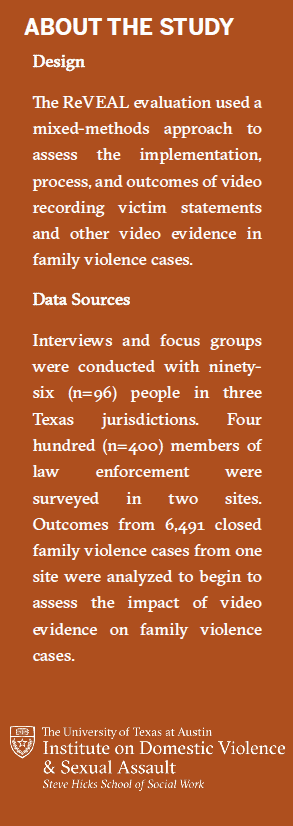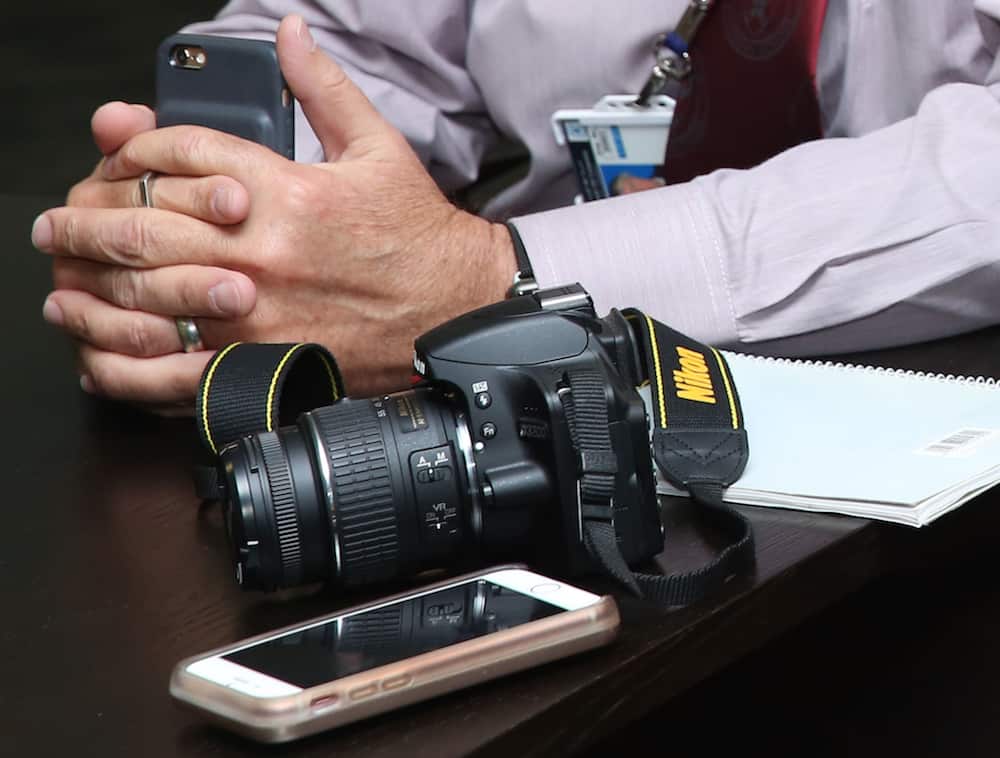Domestic violence cases can be hard to prosecute. After an initial call to 911, many victims are unable or choose not to testify in court and if they do, they may recant their statements and testify on behalf of their alleged abusers.

One way in which the justice system has responded to this challenge is victimless or evidence-based prosecution, whereby prosecutors go forward with the case regardless of the victim’s wishes or cooperation if the available evidence — such as 911 calls, police reports, victim’s initial statement, medical records, and photographs — is sufficient.
Starting in 2011, El Paso police department pioneered another source of evidence for victimless prosecutions: video-recordings that officers make at the scene with handheld cameras. In addition to the victims’ statement, these videos vividly capture their emotional and physical condition moments after the assault as well as any signs it may have left in its wake — furniture tipped over, broken items, blood.
“In one of these videos I could hear a child crying in the background and seen things thrown around throughout the house. A woman was describing the assault and the camera closed up on her face, where you could see a black eye, and then she moved her hair apart and you could see an injury. And then, as she said, ‘and he threw me against the wall,’ the camera panned to show a body print on the wall, made from the impact. And that’s hard to forget,” says Leila Wood, a research assistant professor with the Institute on Domestic Violence and Sexual Assault.
 Wood is leading an evaluation of this program at the request of the Texas Office of the Governor Criminal Justice Division, which funded the initial purchase of cameras in El Paso and has since then has supported the gathering of video evidence for domestic violence cases in other counties in Texas.
Wood is leading an evaluation of this program at the request of the Texas Office of the Governor Criminal Justice Division, which funded the initial purchase of cameras in El Paso and has since then has supported the gathering of video evidence for domestic violence cases in other counties in Texas.
Wood points out that so far the experience in El Paso has shown evidence of success from the perspective of the criminal justice system. Video statements help prosecutors understand cases better, increase law enforcement credibility, and are available for case information if and when victims recant their initial statements.
The evaluation will dig deeper by collecting qualitative evidence from all stakeholders — law enforcement, prosecutors, victim counselors, advocates, victims themselves — as well as analyzing data from closed misdemeanor and felony domestic violence cases to find out if the use of cameras affected the outcomes and increased offender accountability.
Equally important, the evaluation seeks to understand the implications of the use of video statements from the perspective of victims’ agency and safety. Victimless prosecution was meant to reduce burden and be protective: by removing the decision of prosecution from the victim to the state, abusers could not coerce or threaten their partners to drop charges.
“But at the same time, it can reduce victims’ agency,” Wood says. “If they don’t want the case to move forward for whatever reason — perhaps their abusive partner is the only breadwinner in the family or perhaps they are reunited — they don’t get to make that decision. And moreover, the defense attorney gets to see the video, which can be used in court to impeach the victim if they recant. An important part of the research is to understand the victim’s experience with the process.”
Wood says that this project has underscored for her how pervasive technology is in our daily lives and how it has helped bring to light matters that used to be private.
“Domestic and family violence is a private violence, and with the video statements all of a sudden you are right there, witnessing what happened, seeing what that violence looks like,” she reflects. “Technology, in the form of video cameras, has helped bring this private violence to light but at the same time we have to be aware that video statements are enmeshed in a web of complex human relationships and can be used in many different ways.”
By Andrea Campetella. Posted October 27, 2017.


